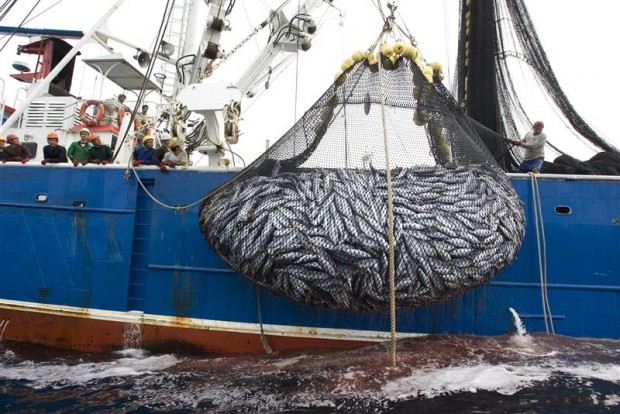Of all the tuna species, skipjack is seen as the most plentiful and the most sustainable. The speed with which it reproduces and matures has meant stocks are more resilient to our industrial fishing fleets than its bluefin and bigeye cousins, and has guaranteed its place in the sandwiches and baked potatoes of the nation. Or at least, that has been the case until now.
Recently, the Inter-American Tropical Tuna Commission (IATTC) has reported that skipjack catches in the eastern Pacific Ocean during 2010 plummeted compared to the previous year (see Atuna for details, registration required). In fact, skipjack catches have been on a downward trend for a couple of years, pushing up prices at the same time. Warning bells are sounding because the body responsible for managing the tuna fisheries of that region – namely, IATTC – doesn't seem to know why this is happening.
There are a number of possible causes, not least La Niña – when ocean surface temperatures of the eastern and central Pacific cool – which prevailed throughout the second half of last year. But this alone is unlikely to explain everything, and you have to wonder if the fishing methods used to harvest skipjack – not to mention the quantity taken from the sea – has something to do with it.
Most skipjack is caught using purse seine nets which catch large amounts of fish in one go, and as the size of individual fishing vessels increases, greater quantities of tuna can be caught on each trip. When you add fish aggregating devices (Fads) to the mix, yet more fish can be caught for the time spent out at sea – the tuna are attracted to and congregate around the Fads, so the fishing vessels don't have to go in search of tuna schools, they just go back to the Fads.
As we know, Fads result in a lot of bycatch – not just of other non-target marine species like sharks and turtles, but also of juvenile tuna. While skipjack tuna do have a prodigious ability to reproduce, there's still going to be a limit on how many immature skipjack you can accidentally scoop up before there's an impact on the population's ability to renew itself.
So both the use of Fads and the rapacious capacity of the fishing fleet could be contributing to the drop in skipjack catches. But the truth is, we don't know. According to Mark Maunder, IATTC's stock assessment scientist, there are many uncertainties in monitoring skipjack stocks in the eastern Pacific, which in turn leads to large gaps in the data on how fishing methods are impacting the species. And this drop in eastern Pacific skipjack numbers has a knock-on effect for the western Pacific, as the fleet just moves over there to fish legally or illegally.
Skipjack catches in the western Pacific are currently at a record high, not because there are more fish but because we're better at finding them, and potentially way over the limits for sustainability within the skipjack population. There's some evidence that this could be about to change, as various nations including Japan, New Zealand, Vietnam and Australia have reported localised declines in skipjack catches. If the skipjack fisheries in the western Pacific were to collapse, then we really would see an end to the era of cheap tinned tuna.
Without better monitoring, there's no way to know just how sustainable skipjack really is. Fish stocks are only plentiful until they're fished into oblivion – remember when cod was cheap?


